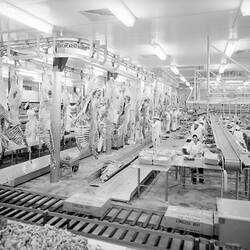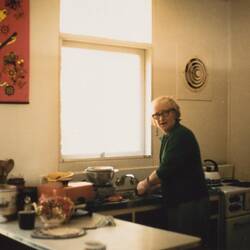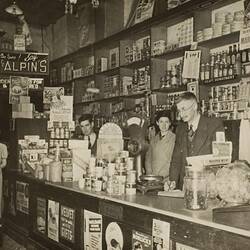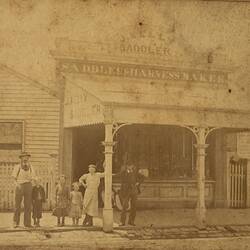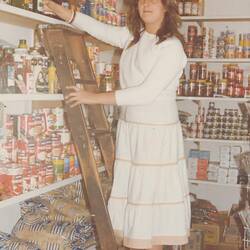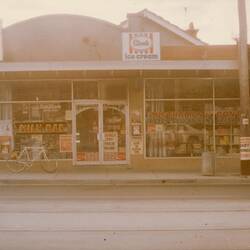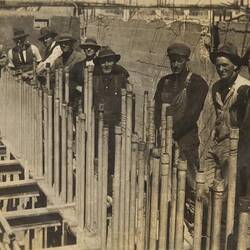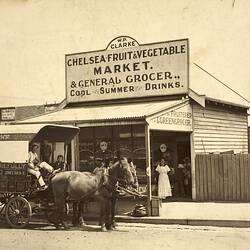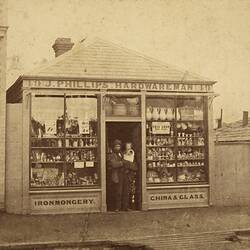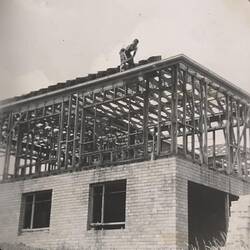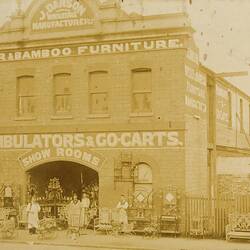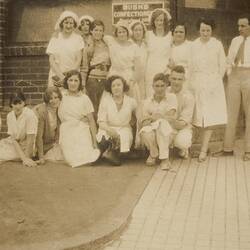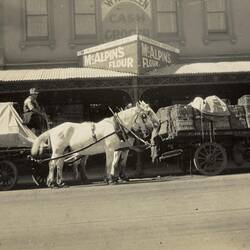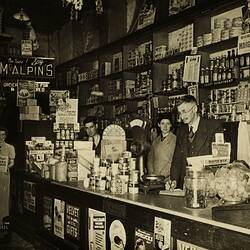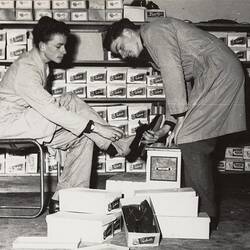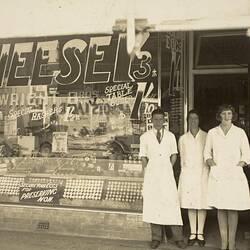A key focus of Museum Victoria's History & Technology Collections is the changing nature of Victorian working lives and workplaces from the earliest years of European settlement in the 1830s through to the present day. While samples of tools and products provide one means of documenting past work practises, images can also provide powerful insight into the changing nature of workplaces and working life. The images collected through the Melbourne's Biggest Family Album project in 2006 document the various tasks that workers have engaged in, equipment and setting, workplace safety, and even who was participating in the workforce in different industries, over time.
Throughout the late 19th and early 20th century, manual labour remained a key part of many workplaces and most non-clerical jobs. Agriculture was one of the first industries to begin mechanising with the loss of rural labour to the goldfields during the 1850s, but on most farms the horse remained the principal source of motive power until after World War I. Steam power played an increasingly important role in mining and manufacturing from the 1860s onwards, but many tasks still required skilled manual labour.
After 1900, electricity gradually began to replace steam power in manufacturing and would eventually lead to a transformation in the layout and appearance of factories, while in retailing it provided the means for improved shop lighting, illuminated advertising signage and later features like refrigerated food display cabinets.
In the home it was not until after World War I that appliances such as washing machines, vacuum cleaners and gas or electric stoves became available, relieving some of the drudgery of domestic work. Young women found employment in education, health care, retailing and some sectors of manufacturing from the late 19th century, but until the 1970s most married women continued to work as full-time homemakers.
Construction work was one of the last industries to depend primarily on heavy manual labour, with machinery like earthmoving equipment, concrete mixers and mechanically powered cranes only gradually being introduced from the 1920s and 30s.
Technical education was introduced from the 1870s, helping to create a more skilled workforce and complementing the more traditional 'on the job' training gained through apprenticeships and indentures.
Throughout the 20th century small businesses continued to employ the majority of workers in retailing and manufacturing. Most of retailing was based on small family-run businesses and personalised service until after World War II when it began to be transformed by the rise of branded chain-stores and shopping malls, creating a trend away from traditional main street shopping strips and the local corner store.
With the post World War II immigration boom, many migrants found work in the manufacturing, construction and retailing sectors where 'unskilled' labour was still heavily in demand.
More Information
-
Keywords
-
Authors
-
Article types


